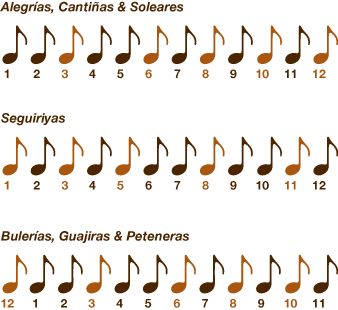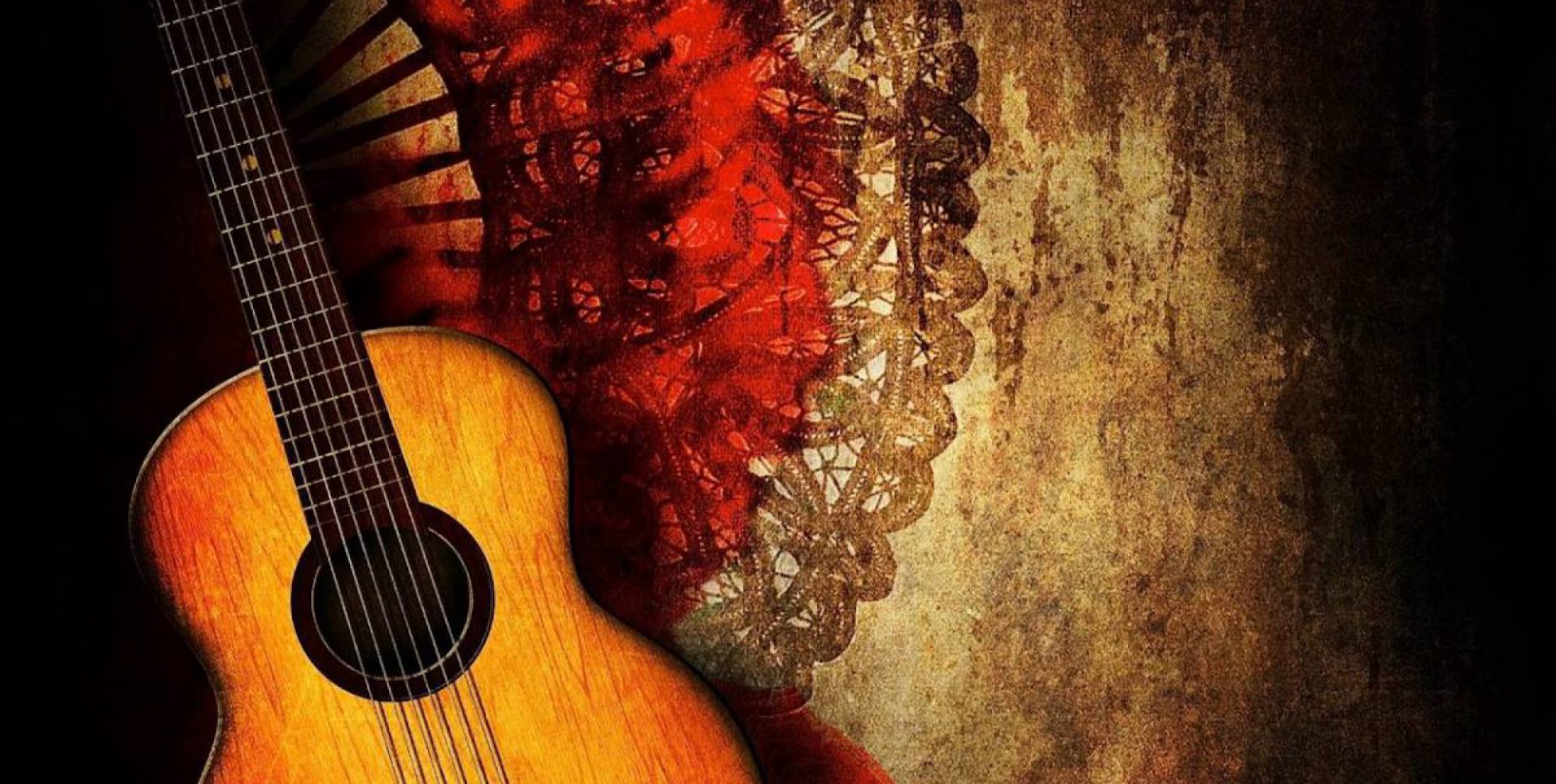 I had enrolled in the Beginner’s class, and found out that there are things we needed to learn first. She taught us about Compás, which are the rhythms used in each palo or style. She started with Alegrias for us beginners, teaching us the rhythm with clapping hands. In the Spanish expression, sometimes the teacher or director will initiate the people with palmas, which is another way of calling the palm of your hands to start the compás for the guitarist, percussion and singer to start. The calling of palmas tells people to be together and assist in the song. A sense of community is prevalent in flamenco, where the gypsy families work together in unison for the greater good.
I had enrolled in the Beginner’s class, and found out that there are things we needed to learn first. She taught us about Compás, which are the rhythms used in each palo or style. She started with Alegrias for us beginners, teaching us the rhythm with clapping hands. In the Spanish expression, sometimes the teacher or director will initiate the people with palmas, which is another way of calling the palm of your hands to start the compás for the guitarist, percussion and singer to start. The calling of palmas tells people to be together and assist in the song. A sense of community is prevalent in flamenco, where the gypsy families work together in unison for the greater good.
When Elba our teacher says, “vamos, palmas” we all know she means a call to us to unite as one; a group of people coming together for the greater good, giving the guitarist a sense of what rhythm to follow.

Flamenco rhythms are usually of either 12, 4 or 3 beats. The rhythmic units is called Compás.
Each palo or style of flamenco has their own distinct rhythm.
- Solea has The style Soleá (or in plural Soleares) has a Compás of 12 beats. The strong beats in this Compás are as usual the 3, 6, 8, 10, and 12. However, some of them are especially pronounced, more specifically the 3, 10 and 12.
- Alegría is another rhythm with a Compás of 12 beats. A typical clapping pattern is equal to the first one shown for Soleá.
- Bulería is rhythmically maybe the most difficult, but also most exciting style. Usually Bulería is taught as an example of a style with 12 beats, which is often true.
- The rhythm of Siguiriyas can be interpreted as a Compás of 12 beats, starting at the 8 and finishing at the 7.
- Tangos, Rumbas, Tarantos, Tientos have rhythms of 4 beats.
- Fandangos are a group of very melodic flamenco styles. Most Fandangos have a very free rhythm (Fandangos libres) are not danced at all. However, between the songs, the guitar usually regains the rhythm at plays “a compás“. Only a few Fandangos have a constant rhythm and are danced, such as Fandango de Huelva. Many people interpret the rhythm of Fandango as a Compás of 12 beats, with the strong beats on the 3, 6, 8, 10, and 12.

So there you have it, the different compases or rhythms of flamenco vary and are difficult to learn. After learning the compás you can help the guitar player, the singer and the dancer with your hand clapping. compas is our own metronome, that if not done correctly, can destroy a whole performance. What that means is that you better know what you are doing in the compás, otherwise you might get the angry looks of some flamenco dancers.
If you have any questions about Compás, leave a comment below, and I will certainly provide you with some help.

Going back to basics. Finding the rhythm using the beat of your hands is incorporated in so many things, as the first step to learning something new. It is a great method to use to help beginners understand the roots of what is being introduced.
LikeLike
Thank you Lanaeya, it is important to learn compas first, it helps the learner know the sequence of the steps, when to start, and when to finish.
LikeLike
I enjoyed reading about your beginners class and see how important it is to learn Compas first. Your visual content grabbed my attention also. Thanks!
LikeLiked by 1 person
Thank you, I appreciate the comment. The visuals are a great added touch.
LikeLike
Reblogged this on MadeleineMaya.
LikeLike